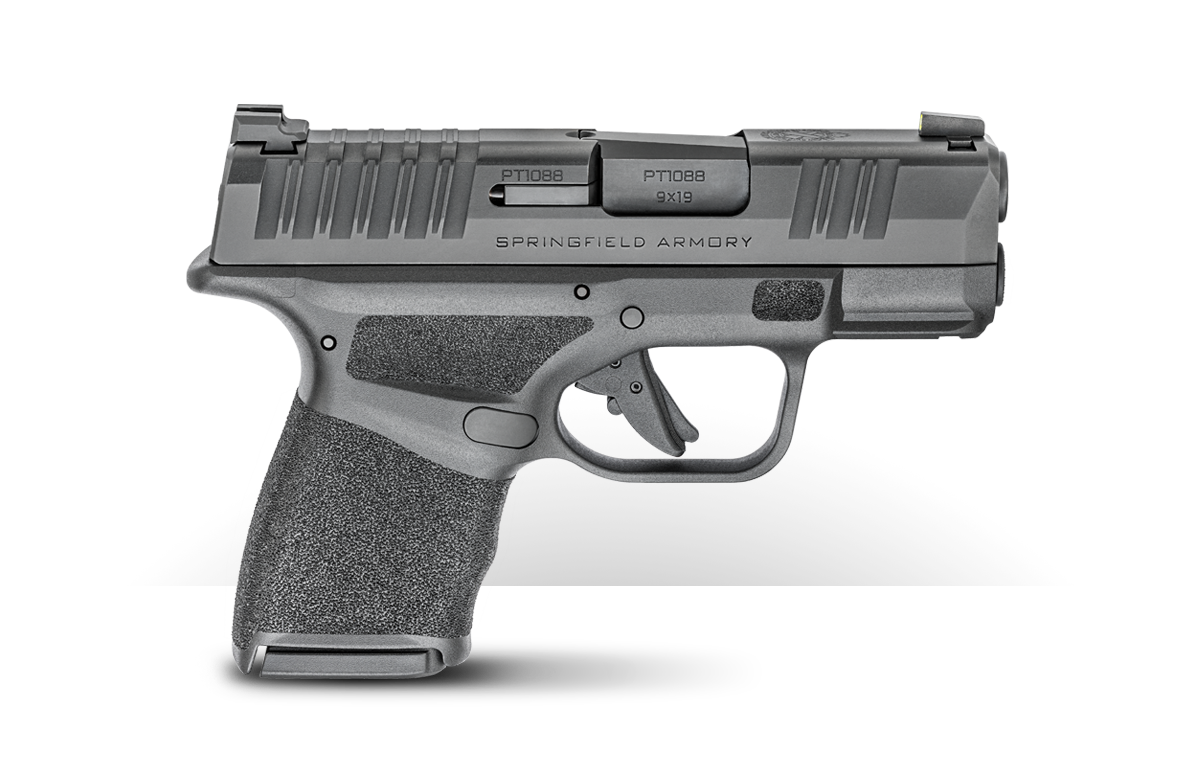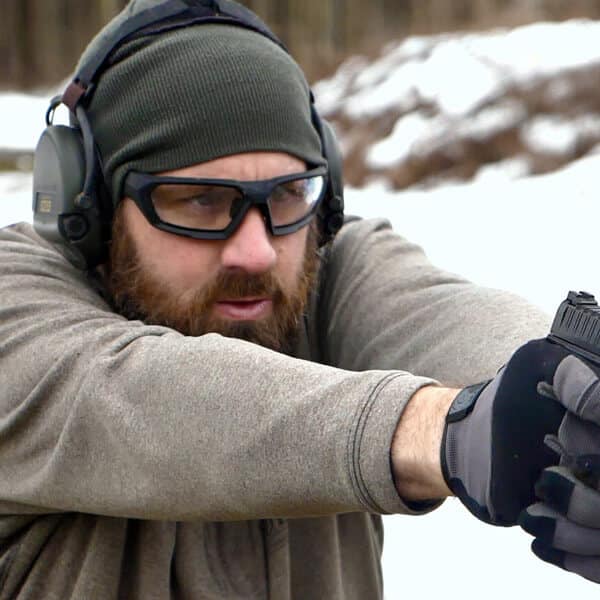When it comes to dealing with a violent encounter, you aren’t allowed a whole lot of say in the matter. The dirtbag picks the time, the place, the weapon he uses and how close he is going to be when he attacks. But you can control your choices in personal protection long before the attack begins. What gear should you select, what skills do you train and practice, and whether or not you carry your gun are all under your control.
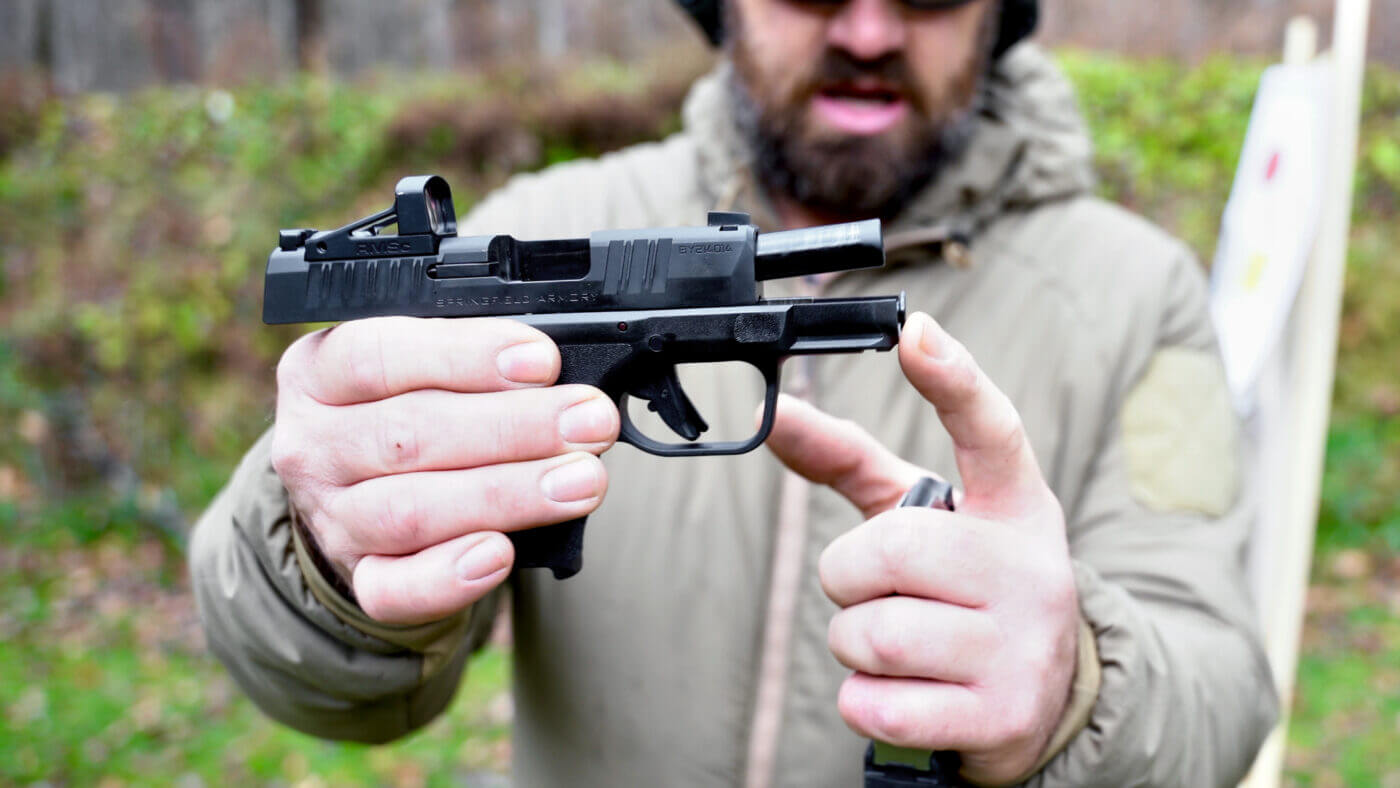
One of the skills that folks should develop some experience with is shooting from retention. I recently spent some time with my Hellcat OSP shooting from retention and discovered a small but potentially meaningful addition to the recoil assembly of the pistol. Read on and check out the video above to learn about shooting from retention and how one of the Hellcat’s built-in features can help.
Why Shoot from Retention?
I don’t know about you, but when my life is on the line I would like to avoid having a tug of war over my loaded handgun. If the threat has their hands on my gun, things have gone wrong. In that situation, I am likely limited to a single-shot pistol due to potential contact point malfunctions if I can make the gun fire at all. Even worse is the possibility of the threat wrestling the gun from my hands and using it against me.
Retention is a shooting position that enables us to put shots on a threat inside two arms reach while we protect the gun from being disrupted or taken away by that threat.
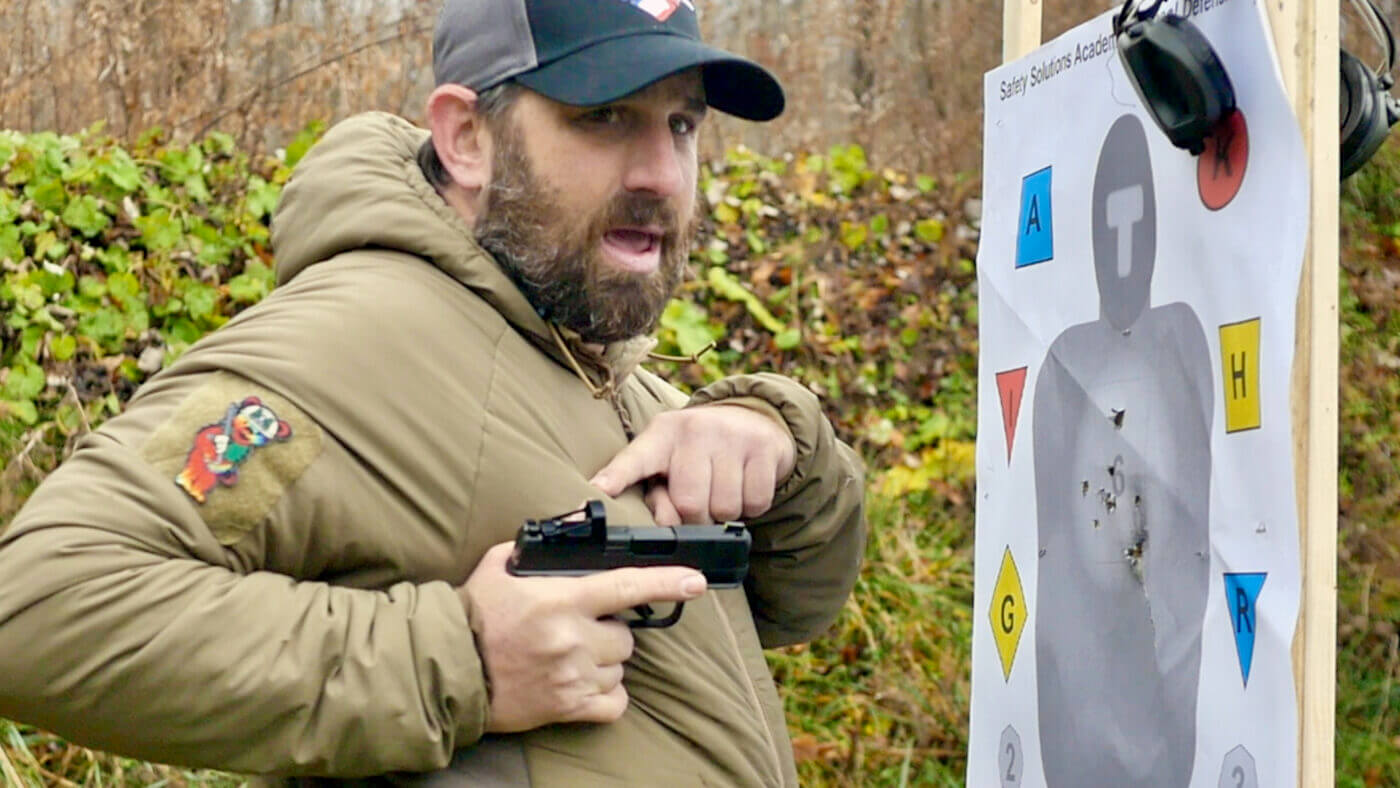
We could find ourselves in close proximity to our threat in several scenarios. Two that tend to cover the majority of the bases are dealing with a threat at a close distance while the gun is still in the holster, and dealing with a threat that is rapidly closing distance after we have already presented the gun.
In the first situation when we need to draw the gun on a threat that is in close proximity, I will refer you to an expert in the area of “In Fight Weapons Access,” Craig Douglass of Shivworks. Craig teaches an excellent course, ECQC, Extreme Close Quarters Concepts, which deals with the position of domination you need to establish to safely draw a pistol while in contact with a threat. I highly recommend Craig’s courses and the courses taught by the rest of the instructors in the Shivworks Collective. There is a link to his site at the bottom of the page.
We are going to leave shooting at retention from the draw to Craig. Here we are going to specifically discuss the second scenario described above. You have presented your gun toward a threat at distance, and that threat closes the distance and makes contact with you.
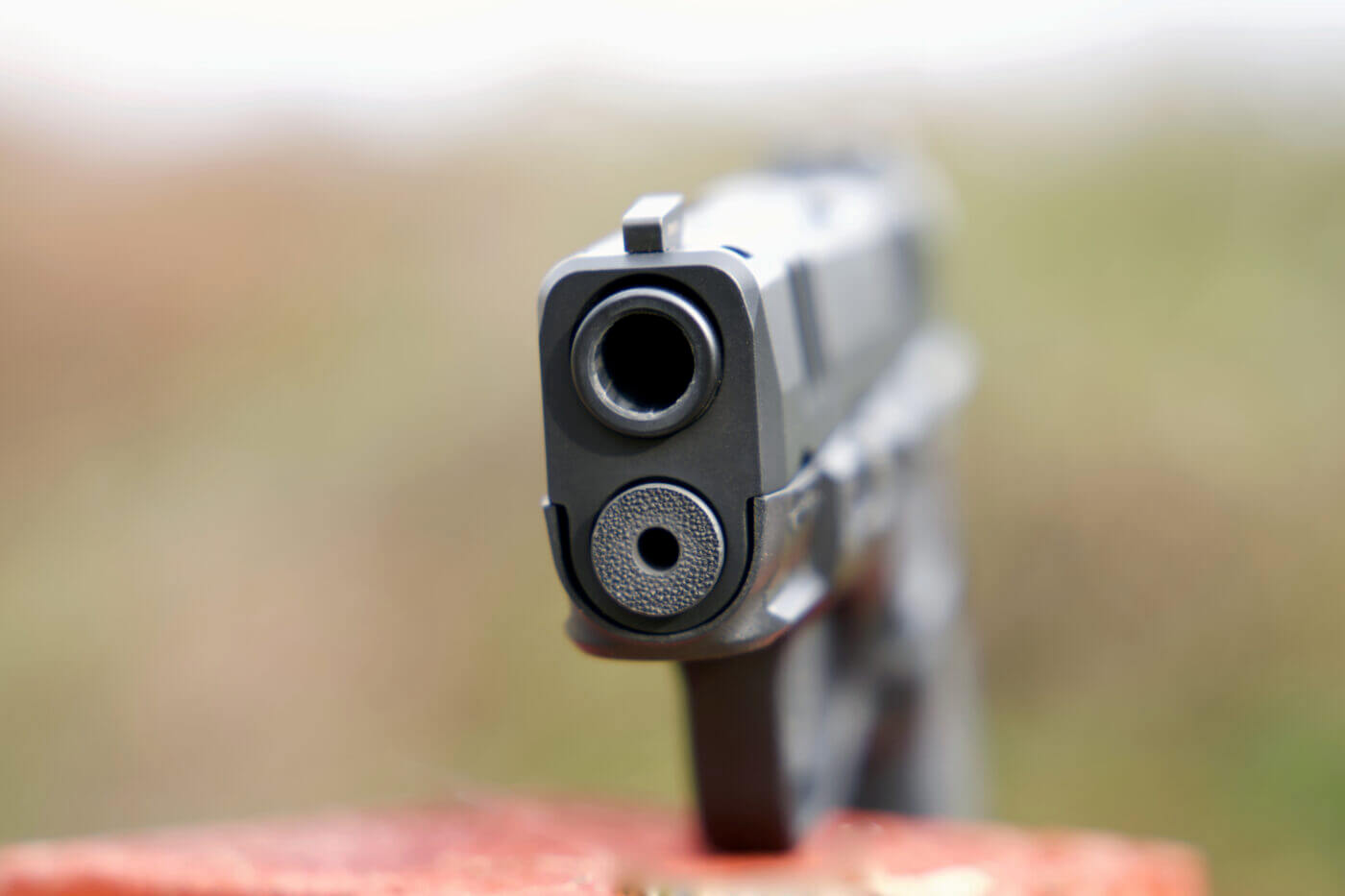
What Is Retention?
Retention with a handgun is a close-quarters shooting position where we can protect the gun and still get hits on the threat. The goal of shooting from retention is to keep the gun in a position where it will function reliably and put rounds where they count.
When shooting from retention you are shooting with the primary hand only. The support hand should drop off the gun and take a protective position with the elbow against the body and the forearm vertical to provide maximum versatility and to keep it away from the muzzle.
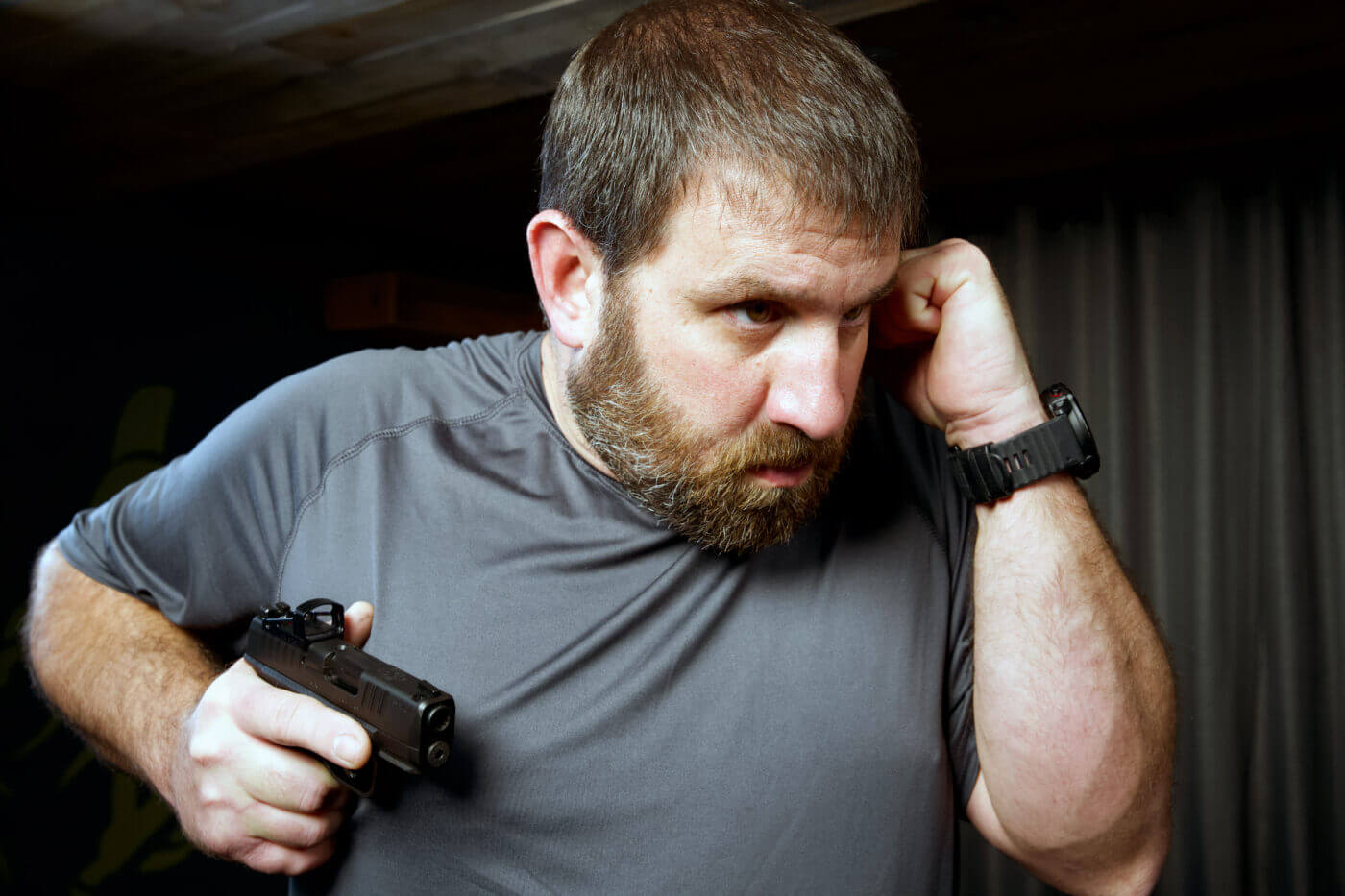
Your shooting arm is collapsed with a bent elbow. The gun is drawn back toward the body to the point where your shooting hand thumb can make contact with your pectoral muscle. You will likely feel considerable tension in your back and shoulder.
The slide of the pistol should be rotated away from the body so that the slide can reciprocate without interference. I like to feel the magazine making contact with my rib cage.
While these are the basic points, I highly recommend seeking qualified instruction in shooting from retention to ensure both proper technique and your personal safety while learning this skill. Never put any part of your body in front of the muzzle of the pistol.
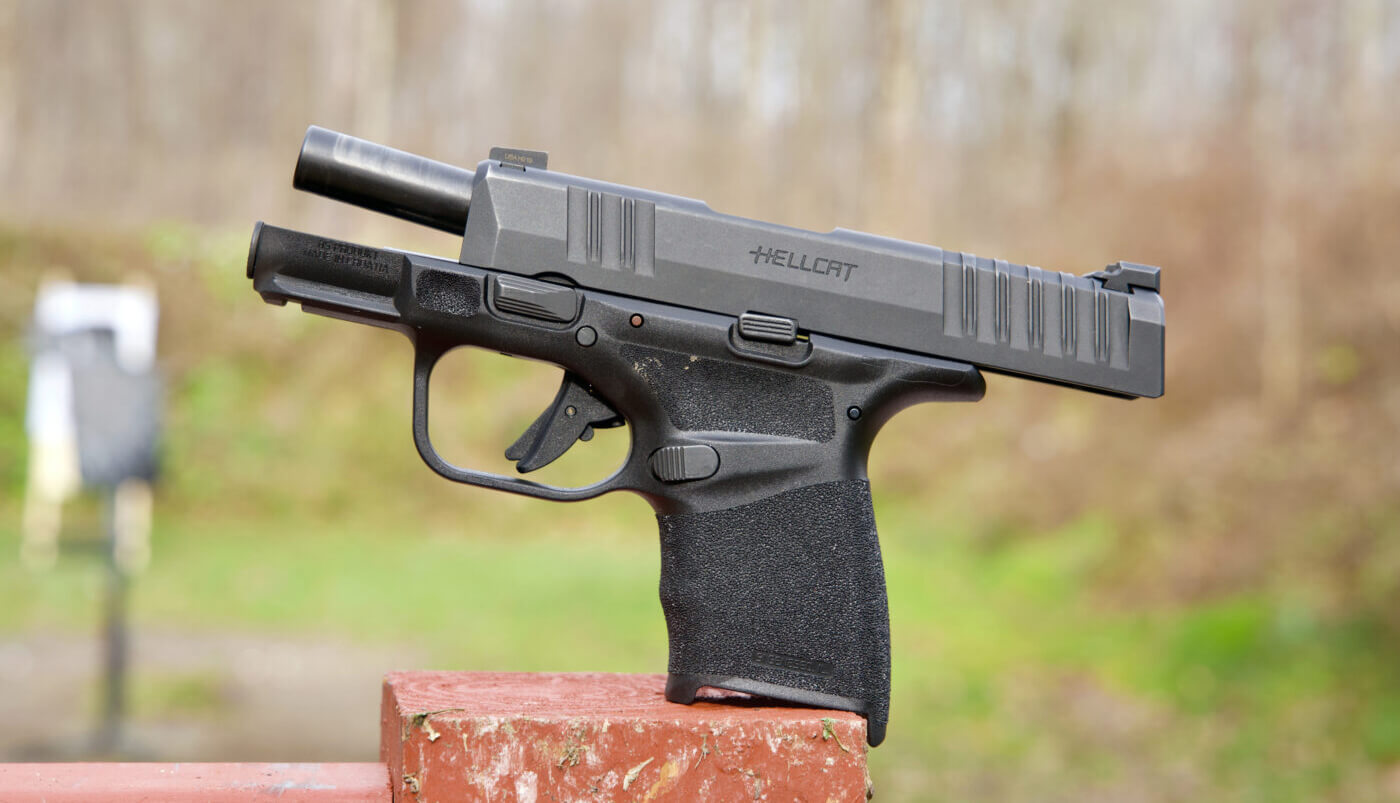
The Hellcat Standoff
The purpose of shooting from retention is to AVOID the muzzle contacting the threat. It’s easy to see how the shooter’s body can make a barrier so the gun doesn’t contact the target. But, in a violent encounter, you aren’t dealing with a target. Instead, you are dealing with a threat. This is a threat that is attacking you and trying to stop you from shooting them.
Based on the above, despite the fact that we want to avoid contact with the threat, it is certainly possible that incidental contact could occur. This is where the design of the Hellcat’s recoil assembly comes in to play. It has a built-in “standoff” on the face of the recoil spring assembly that can help to keep the Hellcat in battery if you happen to make incidental contact while shooting at close range.
The Hellcat’s standoff device is a simple extension of what could be considered the guide rod. It protrudes slightly beyond the frame and the slide. The standoff provides a surface to make contact with the threat and helps prevent contact with the slide or barrel, which could push the gun out of battery during a struggle.
Final Thoughts
Shooting from retention in a violent encounter isn’t something that you should consider part of your “Plan.” Instead, retention is a fallback to help you remain effective when things might not be going your way. Solid technique in collapsing your shooting position into retention can help you to get hits even when the threat closes the distance to contact range. Shooting from retention with proper technique helps you to avoid making contact with the threat with the muzzle of the gun. However, should the threat come into direct contact with the pistol, the built-in standoff on the Hellcat helps to ensure function even if there is some incidental contact.
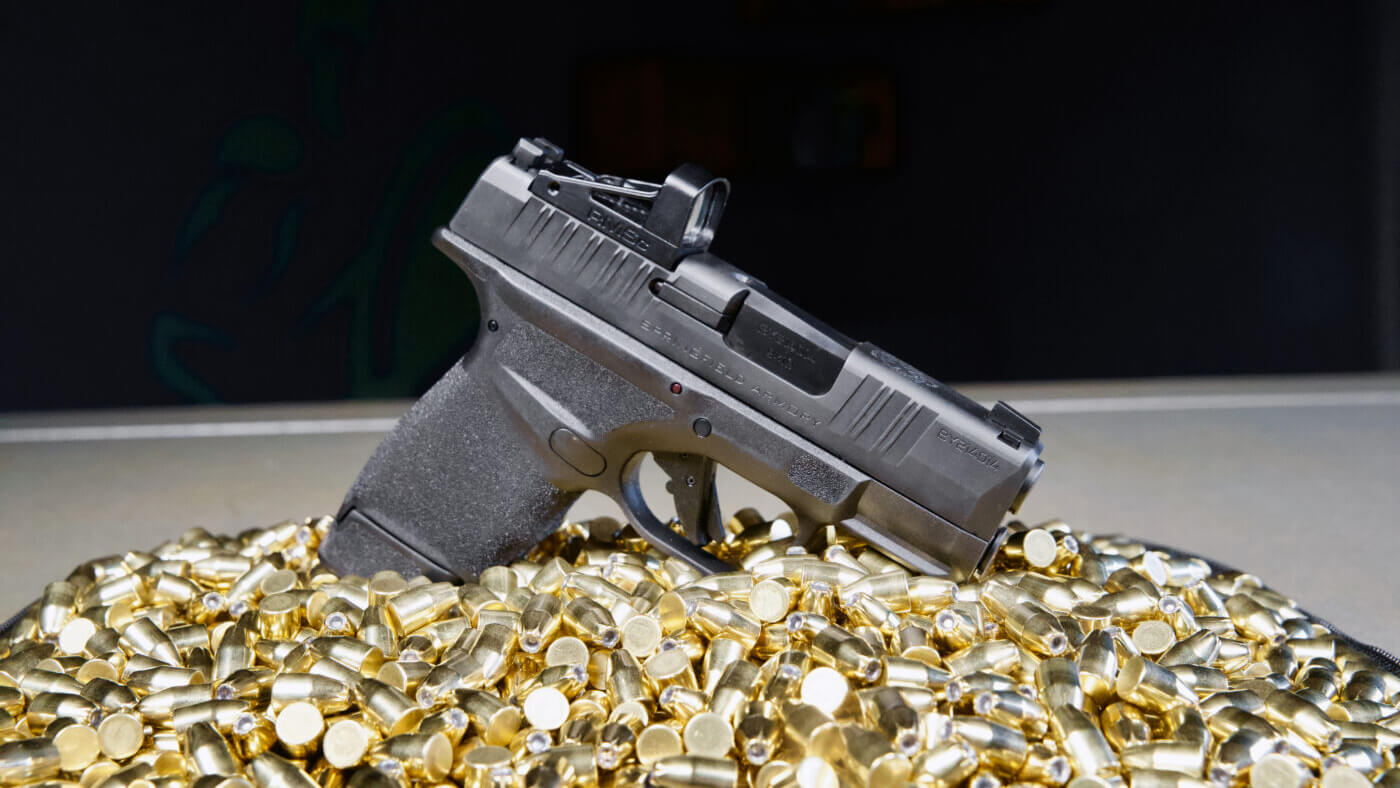
The standoff device is just one of the things that makes the Hellcat the great gun that it is. It’s all the little details that the engineers at Springfield Armory worked into this little pistol that make it such a great defensive micro 9mm.
Editor’s Note: Please be sure to check out The Armory Life Forum, where you can comment about our daily articles, as well as just talk guns and gear. Click the “Go To Forum Thread” link below to jump in and discuss this article and much more!
Join the Discussion
Featured in this video
Continue Reading
Did you enjoy this video?

 240
240




